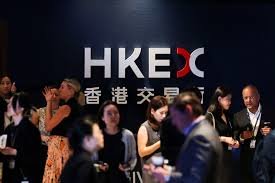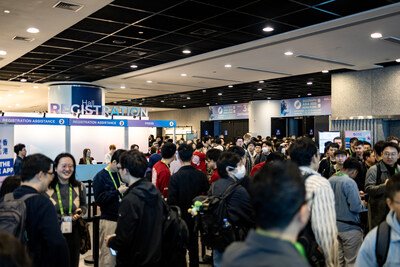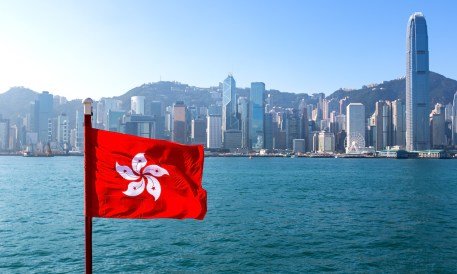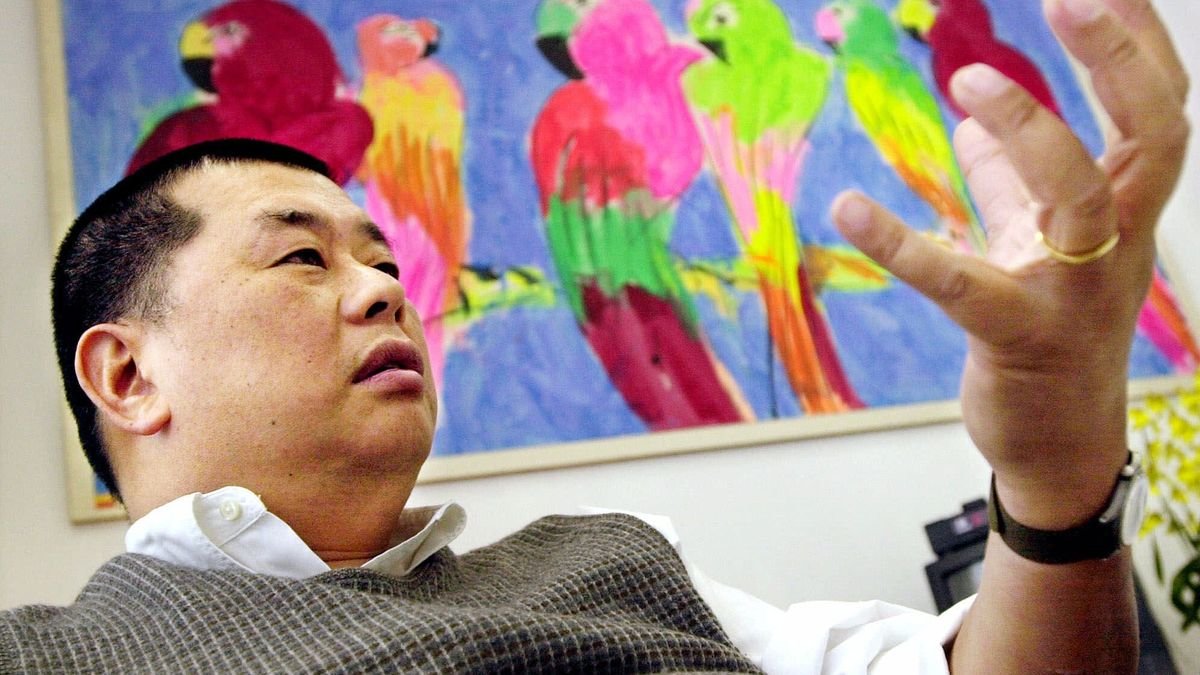
When it comes to finding a dress to wear on a night out, the options are endless. Certain outfits flatter certain body types, weather and occasions, so it can be overwhelming to try and tackle the choices alone. Here is your guide to all dress types, for any occasion.
1. Midi Dress

Sitting between a maxi and a mini dress, the midi is what everyone needs for the times when you’re unsure of the formality of an event. This style can have any neckline or sleeve length, so it’s great for any body shape. Pull-on tights and ankle boots for a perfect winter look, or grab a pair of flats and a cute straw hat and have a stylish picnic!
2. Off the Shoulder

Take the plunge and keep your shoulders exposed in an off-the-shoulder dress. These dresses showcase your shoulders, while maintaining a sleeve or ruffle on the bicep. The off-shoulder style is great for those who want to exhibit their shoulders and arms but don’t want the commitment of a strapless look.
3. Shift Dress

The shift dress was a massive trend in the early 1960s and has a simple, boxy shape. It is a short and typically sleeveless dress that hangs from the shoulders. It’s ideal for those who have a lean, column-esque body shape, as they appear straight. You can style this dress with a mid-length duster jacket and a pair of slingback heels or even knee-high boots, to give it that real ‘60s flair! This shape is the ideal blank canvas for color blocking or print detail.
4. Bodycon Dress

The bodycon is a tight-fitting dress that hugs your figure and accentuates your assets. They’re often made of stretchy material and are perfect for a night out on the town. This dress is ideal for those with an hourglass figure, as it flatters the beautiful curves!
5. A-Line Dress

An A-line dress fits at the hips and gradually flares out towards the hem, which makes the dress look like an “A” shape. It is perfect for a casual setting, and you can dress it up or down with ease. This style is best suited for pear-shaped bodies, as it shows off your lovely shoulders and adds a feminine touch to your lower half.
6. Mini Dress

The scandal broke loose in 1965 when model Jean Shrimpton wore a mini shift dress to the Melbourne Cup, showcasing her bare legs and hat-free head to the world. Nowadays, mini dresses are far more mini and far less scandalous, and they’re a great way to capture attention and showcase your pins! This dress is ideal for anyone who wants to put emphasis on their legs and make the world stop and turn! If you’ve got it, flaunt it!
7. Maxi Dress
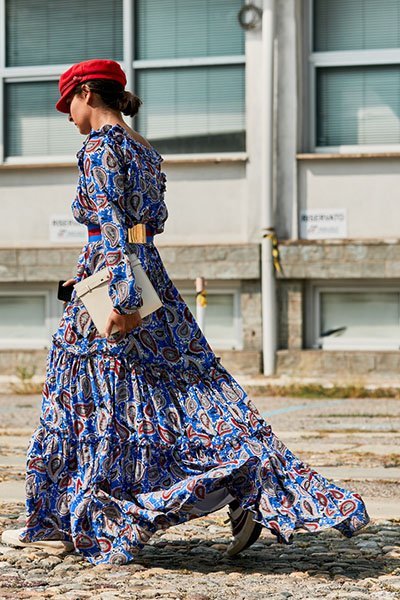
Spend the day at the beach or by the pool in a relaxing in the effortless maxi dress. This style is suited best for a more casual setting; however, the fabric hits the floor (or at least your ankles), giving the impression that you’re dressed up. Make the perfect lazy outfit by adding sandals and long-hanging jewelry into the mix, and everyone will wish they were as stylish and comfy as you are!
8. Wrap Dress

The wrap dress features a front closure by wrapping one side of the dress across the other and tying the fabric at the waist or back. Often seen by the likes of Kate Middleton, this style has a classic silhouette that is perfect for athletic body shapes, as it creates the illusion of an hourglass figure, even if you don’t have one naturally.
9. Halter Dress

A halter dress is ideal for summer. Featuring a strapless or sleeveless upper half, with a tie around the neck. Some halter necks don’t have a bow but fabric secured around the neck. This style of dress is most flattering for those who wish to show off their ample shoulders.
10. High-Low Dress

A high-low dress is a form of asymmetrical dress. They are typically longer at the back, and shorter at the front. This shape works with casual dresses as well as the ballgowns. It is the perfect style for anyone who wants to show off their sexy pins, and they’re best paired with high heels or platforms, so the back of the dress doesn’t drag on the floor.
11. Sheath Dress

A sheath dress is form-fitting, it has a straight cut and is nipped at the waistline, with no visible seam. It sits at the knee or just above and is ideal for a business event or a night out. This dress style is perfect for those who want to put their gorgeous curves in the spotlight, as it flatters those with an hourglass figure.
12. Peplum Dress

For those who love a playful style, a peplum dress is perfect. The detail can be below the waist, under the bust, at the hips, or around the neck or shoulders. The fit and flare silhouette of the peplum shape has its origins from Greek antiquity. For a day to night look, you can swap flats for a pair of hot heels, adding height to your figure, making your legs look super long and your waist nipped in and tiny.
13. Sweater Dress

Keep it casual with a sweater dress! This dress is knitted, it can be form-fitting or loose, and it comes in different lengths. It is perfect for all body types as there are so many different silhouettes. You can pair it with thigh-high boots to keep your pins warm, or add a sneaker for a fresh casual look!
14. Pencil Dress

If you’re heading out somewhere and you’re trying to impress someone, the pencil dress is the one for you! Named after the pencil shape, a pencil dress is typically nipped in at the waist, with a hem that hits below the knee and has no frills or flounce. This silhouette is great for a little black dress or a go-to for a date night. You can switch things up a bit by opting for a plunging neckline or keep it fresh and sexy with a turtleneck.
15. Shirt Dress

Keep it cool and casual with a shirt dress. Defined as a loose-fitting dress, it features a shirt collar and a button-down front. This style comes in different lengths, and sometimes has a nipped in waist. The focal point of a shirt dress is the collar and button-down front. It’s super easy to dress up or down, grab some chunky ankle boots or sneakers and you’ll be ready for a night out or a night at the beach!
16. Slip Dress

Unleash your inner grunge girl with a slip dress. You would typically wear this style as an undergarment; it is usually satin, with a V-neck line, spaghetti straps, and lace. You can dress it up or down with a pair of barely-there heels or chunky boots. Keep it casual by pairing this dress with a basic T-shirt or a white shirt underneath, to give it that real ‘90s feel!
17. Smock Dress

A smock dress is a gorgeous go-to for anyone in a rush! Super comfy to wear, a smock dress is usually loose-fitting. It can have long sleeves or be strapless, so it’s super versatile. Dress it up or down with a leather jacket and cute ankle boots for a perfect transitional outfit!
18. Ballgown

Be the belle of the ball with a ballgown! It is a formal dress that hits the floor, it is perfect for a fancy event such as a black tie dress code premier or a ball. This style comes in many different forms, from a princess silhouette, with a prominent pouffy skirt, all the way to the mermaid silhouette. A ball gown is a dress to wear when you’re ready to make a real entrance, and wow the whole room!
19. Mermaid Silhouette Dress

A style of a ballgown, the mermaid silhouette is the perfect dress for a black tie occasion. As the name suggests, the mermaid dress is long and straight from the top all the way to the middle of the thigh or calf, where it flares out into a wide skirt, as a mermaid’s tail would. If you have an hourglass or pear-shaped figure, opt for the tight-fitting silhouette. For column-esque bodies, you can go for a profile that’s a bit looser on the waist and hips.
20. T-shirt Dress

The ultimate casual dress, the T-Shirt dress is the one that you can go for when you’re stepping out to brunch or the movies. Much like a regular T-shirt, the round neck and loose-fitting silhouette sit just above the knee. Of course, you can also find a T-shirt dress with a pencil skirt silhouette, but the focus is on the T-shirt neckline. This look is perfect for any body type, so get creative, as this dress is a real blank canvas for any season!
21. Tea Length Dress

This classic style has its modern origins from Edwardian times when fabric became lighter which made it popular to wear indoors, around friends, often while drinking tea. This silhouette has a full circle skirt that hits at the mid-calf. A vintage-inspired silhouette, a tea length dress is perfect for those who are on their way to a semi-formal event or wish to add some classical Hollywood drama into their outfit. Pair it with cute flats or classic low heel pumps for a full Audrey-inspired get up.
22. Cocktail Dress

As the name suggests, a cocktail dress is a choice for a schmaltzy party or drinks at the bar. A cocktail dress is a blend of formal and casual, it hits just at the knee and is perfect for cocktail dress code events. This is a versatile dress, with different necklines and silhouettes, so you can find the ideal dress to suit you.
23. Denim Dress

When you’re not in the mood to squeeze into your jeans, slip on a cute denim dress! Just as the name suggests: this type of dress is made of denim. They come in a wide range of styles, with long sleeves and a button-down front, or a pinafore with pockets. This casual-cool style is effortless, chic, and suitable for many occasions.
24. Pinafore Dress

A pinafore dress is a collarless, strapless dress with medium-sized straps on the shoulder. You can wear it with a shirt or a turtleneck underneath. This cute little dress is a great way to showcase your figure without having to squeeze into something too tight!
25. Bardot Dress

Named after the blonde bombshell, Bridgette Bardot, this dress radiates decadence and sophistication. With an off-the-shoulder motif, these dresses are complete with a sleeve that sits just below the shoulders, giving you the impression that you’ve slipped the sleeves off just a little!
26. Tube Dress

If you’re ready to make an entrance while making an impact, show off your assets in a tube dress! Tight, form-fitting, and strapless. This dress is the ideal style for summer nights when you want to look sexy and seductive, without compromising on keeping yourself cool. This dress is great for all body types, as the figure-hugging silhouette amplifies your best features!
27. Qipao Dress

This traditional Chinese dress dates all the way back to the 17th century during the Manchu rule. Stunning in design, the Qipao features a high neck and a straight skirt. Traditionally made of silk, they are complete with delicate embroidery. The modern Qipao became popular in the West in the 1920s, and features a high slit on one or both legs, with a variety of different sleeve types. This dress is a stunning glimpse into the intricate and awe-inspiring Chinese culture.
28. Long Sleeve Dress

For those chilly winter nights, opt for a dress with long sleeves. This style is not only a smart choice for freezing nights, but they’re also incredibly sexy and alluring. Long-sleeved dresses come in a range of different silhouettes, so no matter what style you’re after, whether it be a bodycon, ballgown or a midi dress, there is something perfect for you! These dresses are ideal for those who wish to keep their arms covered.
29. Bell-Sleeve Dress

A bell-sleeve dress identifies itself with the sleeve ending at the mid-forearm or wrist, with a flare flowing down towards your hands. The sleeve is shaped like a bell, hence the name. These dresses come in different silhouettes, but the focal point is the sleeves.
30. Strapless Dress

Show off those gorgeous shoulders with the help of a strapless dress. The first modern strapless dress is said to have originated in the 1930s by designer, Mainbocher. As the name suggests, this style has no sleeves or straps, and it sits just above the bust, relying on your body’s contour to keep up. If you don’t feel like showing skin, you can always rock these dresses with a T-shirt underneath or a skivvy.
31. Blazer Dress

The blazer dress is the perfect ensemble to wear when you need to talk business, but have fun at the same time! These dresses look like a blazer, but they are worn as a dress. The style is typically double-breasted, giving the appearance that you’re wearing a men’s blazer. It’s versatile and perfect for any season, so rock it with low rise sneakers of a pair of ankle boots.
32. Empire Waist Dress

The empire waist dates all the way back to the 18th century. The dress gathers under the bust at the slimmest part of the torso, creating a flattering effect. If you’re smaller on the top part of your body, this dress will pinch the top of your abdomen and flare at the bottom. It’s perfect for petite girls, as it elongates bottom half giving the appearance of wickedly long legs.
33. Sun Dress

Catch those rays and wow everyone in a sundress. This garment is best worn in the warmer months, as it’s loose-fitting with spaghetti straps and a wide neckline. These dresses are often tighter around the waist and have a fuller skirt. Sundresses are soft, light, and feminine, best seen in a stunning floral pattern or pastel color.
34. Kimono Dress

This traditional Japanese gown dates over a thousand years ago when the word “kimono” meant a piece of clothing. Now, the kimono is one of the most widely recognized garments, characterized by its long sleeves and a wraparound closure. While the traditional kimono is still prevalent today, the modern kimono dress can have a slit in one leg, wraparound design and long sleeves.
35. One Shoulder Dress

Whether you’re indecisive or it’s just cold outside, you can always opt for a one-shouldered dress! A one-shoulder dress is a form of asymmetrical dress, characterized by the single shoulder. Choose from a full-length sleeve or one strap; however, you wish to wear it, you’ll make a statement. The asymmetry of the garment will attract attention for all the right reasons; you’ll look stunning!
36. Handkerchief Hem Dress

Add a twist to the asymmetrical dress with a handkerchief hem. These hems are designed to appear as though several handkerchiefs were held at the center, flowing down in the skirt. The style of handkerchief hems can be found at any length, with any neckline. It can be subtle or pronounced, and is a beautiful way to show off your gorgeous pins!
37. Asymmetrical Dress

An asymmetrical dress is an excellent option for those who aren’t sure of the formality of an event or party. An asymmetrical dress will have two sides of a different length. Sometimes the dress is longer at the back than the front, or shorter on one side. You can also find asymmetrical dresses that are sleeveless on one side and with a long sleeve on the other side. There are so many variations of asymmetrical dresses that flatter any body shape!
38. Bandage Dress

Popularised in the ’90s by French designer Hervé Léger, the bandage dress has a similar silhouette to the bodycon shape. However, its evolution is closer to shapewear. The dress got its name due to its ‘bandage’ construction, consisting of layers of knitted tape that hug the curves in all the right places.
39. Pouf Dress
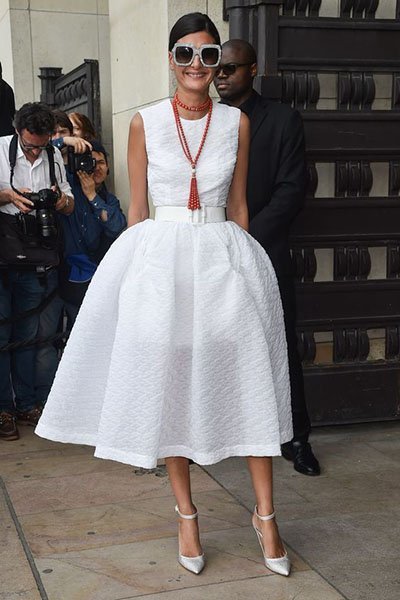
Nipped in at the waist and pleated into a full skirt, the pouf dress is sweet and girly. Very 1950s in design, this style is famous for its “poufiness” in the skirt. You can go full throttle down the feminine road by pairing it with cute pumps and pearls, or you can make it rocker chic with sneakers and a leather jacket.
40. Princess Silhouette Dress

The princess silhouette is what you’d typically see in a Disney film. Tight-fitting at the top and waist, it flows like a dream below the waist, giving the effect of a full princess-esque gown. This dress is made for anyone, as it accentuates your shoulders and arms. The princess silhouette is a traditional and historic-inspired dress, for those who wish to be a princess for a day!
